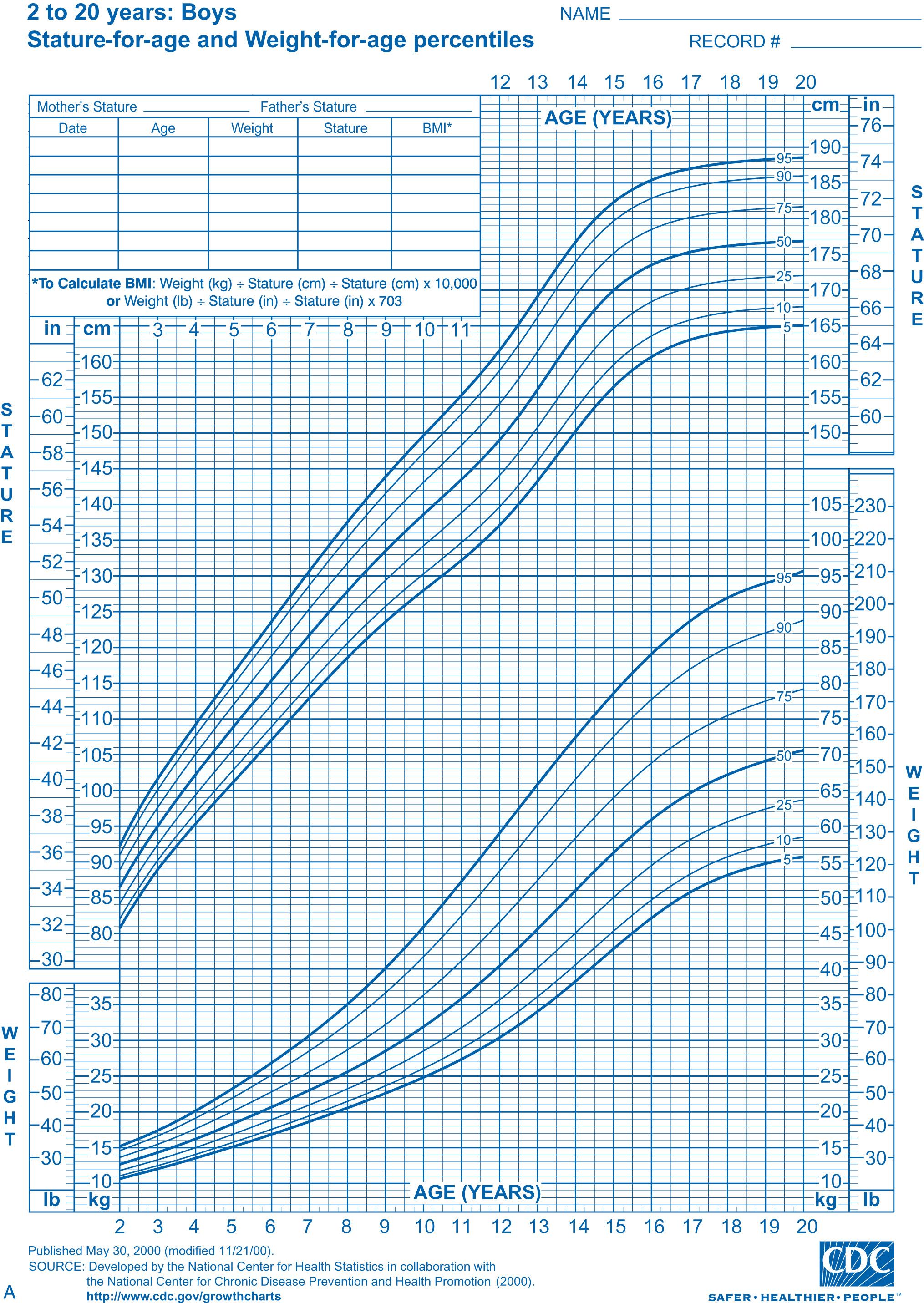Physical Address
304 North Cardinal St.
Dorchester Center, MA 02124
Middle childhood (6-11 yr of age) is the period in which children increasingly separate from parents and seek acceptance from teachers, other adults, and peers. Children begin to feel under pressure to conform to the style and ideals of the peer group. Self-esteem becomes a central issue, as children develop the cognitive ability to consider their own self-evaluations and their perception of how others see them. For the first time, they are judged according to their ability to produce socially valued outputs, such as getting good grades, playing a musical instrument, or hitting home runs.
Growth occurs discontinuously, in 3-6 irregularly timed spurts each year, but varies both within and among individuals. Growth during the period averages 3-3.5 kg (6.6-7.7 lb) and 6-7 cm (2.4-2.8 in) per year ( Fig. 25.1 ). The head grows only 2 cm in circumference throughout the entire period, reflecting a slowing of brain growth. Myelination continues into adolescence, with peak gray matter at 12-14 yr. Body habitus is more erect than previously, with long legs compared with the torso.

Growth of the midface and lower face occurs gradually. Loss of deciduous (baby) teeth is a more dramatic sign of maturation, beginning around 6 yr of age. Replacement with adult teeth occurs at a rate of about 4 per year, so that by age 9 yr, children will have 8 permanent incisors and 4 permanent molars. Premolars erupt by 11-12 yr of age (see Chapter 333 ). Lymphoid tissues hypertrophy and reach maximal size, often giving rise to impressive tonsils and adenoids.
Muscular strength, coordination, and stamina increase progressively, as does the ability to perform complex movements, such as dancing or shooting baskets. Such higher-order motor skills are the result of both maturation and training; the degree of accomplishment reflects wide variability in innate skill, interest, and opportunity.
Physical fitness has declined among school-age children. Sedentary habits at this age are associated with increased lifetime risk of obesity, cardiovascular disease, lower academic achievement, and lower self-esteem. The number of overweight children and the degree of overweight have been increasing, although recently at a slower rate (see Chapter 60 ). Only 15% of middle and junior high schools require physical education class at least 3 days/wk. One quarter of youth do not engage in any free-time physical activity, despite the recommendation for at least 1 hr of physical activity per day.
Perceptions of body image develop early during this period; children as young as 5 and 6 yr express dissatisfaction with their body image; by ages 8 and 9 yr many of these youth report trying to diet, often using ill-advised regimens. Loss-of-control (binge) eating occurs among approximately 6% of children at this age.
Prior to puberty, the sensitivity of the hypothalamus and pituitary changes, leading to increased gonadotropin synthesis. Interest in gender differences and sexual behavior increases progressively until puberty. Although this is a period when sexual drives are limited, masturbation is common, and children may be interested in differences between genders. Rates of maturation differ by geography, ethnicity, and country. Sexual maturity occurs earlier for both genders in the United States. Differences in maturation rates have implications for differing expectations of others based on sexual maturation.
Middle childhood is generally a time of excellent health. However, children have variable sizes, shapes, and abilities. Children of this age compare themselves with others, eliciting feelings about their physical attributes and abilities. Fears of being “abnormal” can lead to avoidance of situations in which physical differences might be revealed, such as gym class or medical examinations. Children with actual physical disabilities may face special stresses. Medical, social, and psychologic risks tend to occur together.
Children should be asked about risk factors for obesity . Participation in physical activity, including organized sports or other organized activities, can foster skill, teamwork, and fitness as well as a sense of accomplishment, but pressure to compete when the activity is no longer enjoyable has negative effects. Counseling on establishing healthy eating habits and limited screen time should be given to all families. Prepubertal children should not engage in high-stress, high-impact sports, such as power lifting or tackle football, because skeletal immaturity increases the risk of injury (see Chapter 713 ).
Become a Clinical Tree membership for Full access and enjoy Unlimited articles
If you are a member. Log in here